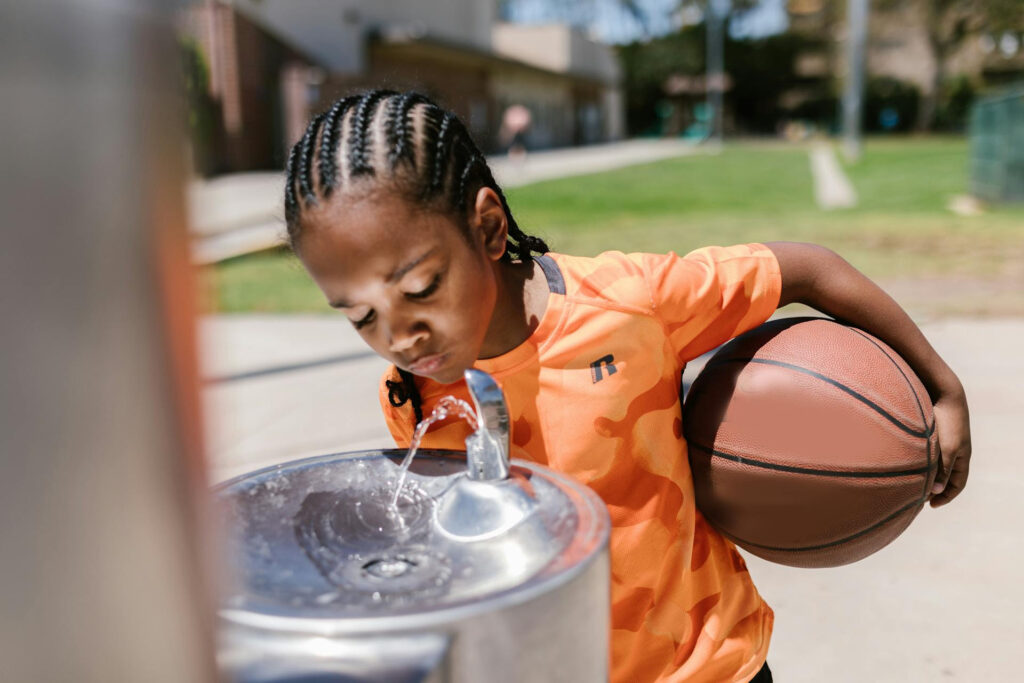By the end of August, most families have long since organized school clothes, backpacks, permission slips, and after-school schedules. In fact, in many parts of the US, students’ first day of school was over a week ago.
However, it is never too late to ask questions about school conditions or practices that affect your child, other students, and staff.
Five Key Issues for Children’s Environmental Health and Safety
Renovation/Reconstruction
If school has not completed its building renovation project, then ask your school to host a public meeting on how it is protecting children and staff from the noise and the dangerous fumes, dust and debris, and the projected time-line for completion. Some states require schools and their construction contractors to protect occupants.
- See our guide to the NYS school renovation regulations
- See US EPA’s guidance on Indoor Air and construction practices
Pests and Pesticides
Schools are densely occupied buildings, typically without staff to clean daily; meals and snacks are essential during school days; spills happen: of course there are pests! But more than 30 states have adopted less-hazardous pest management policies. That’s because pesticides kill living organisms and can permanently damage children’s health. Ask your school how it controls pests indoors and how it manages schoolyards and fields using child-safe practices; compare to the guidance below.
- See our guide to Kicking the Pesticide Habit
- See US EPA regulates pesticides; see regulations and guidance
Clean Indoor Air and Green Cleaning Products
Clean indoor air in schools is critical to thinking, learning, behavior, and staying healthy. Cleaning with hazardous products is bad for indoor air, bad for worker health, and puts children at risk.
- See our guide to Indoor Air in school
- See our April 2024 summit report AIR JUST AIR: Clean Air in Schools
- See our toolkit on green cleaning and safer disinfecting
Drinking Water
Ask your school for a copy of the tests at the tap for lead in drinking water. All states have received EPA grants to encourage schools to test. Don’t panic: first, everyone finds some lead at home and at school; second, large buildings like schools do not have lead service lines from the main to the facility; and third, high lead taps can be replaced with EPA certified lower lead fixtures.
- See our guide to lead in school water
- See US EPA guide on how to find lead-free fixtures for your home or school
- See US EPA August 2024 announcement below of new funding for school drinking water
Extreme Heat
Ask your school for its plan to address children’s health and safety in extreme heat events, in school and on the playing fields. Heat is the third leading cause of death among student athletes. And high heat in classrooms interferes with learning new material and it depresses test scores. Does school have a cooling plan; does it have shaded outdoor areas; does it have a plan to evacuate the building when temperatures reach into the 90s; if your child has asthma or other chronic conditions, does s/he have a plan to address special needs?
- See guidance from the American Academy of Pediatrics
- See guidance from US EPA on extreme heat and children
- See our recent guest blogs on high heat in schools
In The News
The US Department of Education National Center for Education Statistics (NCES) shared new findings from the School Pulse Panel, focused on learning strategies and recovery, student attendance/absences, and learning modes during the 2023-24 school year.
SchoolSafety.gov launched its 2024 Back to School Campaign to support K-12 school leaders, educators, staff, and parents and caregivers in preparing for the safe return to school.
US Surgeon General Vivek Murthy: To Protect Adolescents, Social Media Needs Warning Labels
On Thursday, August 22, the U.S. Environmental Protection Agency announced $26 million in funding to protect children from lead in drinking water at schools and childcare facilities. This grant funding will be used by 55 states and territories and the District of Columbia to reduce lead exposure where children learn and play while advancing the goals of the Biden-Harris Administration’s Lead Pipe and Paint Action Plan.





